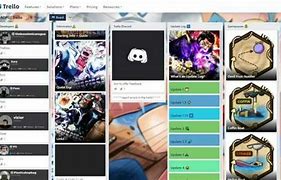In the modern digital era, project management tools are pivotal for ensuring efficient workflows, seamless collaboration, and successful project completion. Among the myriad of project management solutions available, Trello has emerged as a favorite due to its simplicity, versatility, and effectiveness. Specifically, for Agile Operations Project Groups (AOPG), Trello offers a robust platform that facilitates streamlined project management, fostering enhanced productivity and team collaboration. This article delves into the features, benefits, and practical applications of AOPG Trello, shedding light on why it is an indispensable tool for project managers and teams alike.
Understanding AOPG Trello
Trello is a visual collaboration tool that organizes projects into boards, allowing teams to see their projects’ progress at a glance. AOPG Trello is tailored for Agile Operations Project Groups, focusing on methodologies that enhance agility, flexibility, and responsiveness in project management. This tailored approach makes Trello an ideal choice for dynamic environments where project requirements and scopes frequently change. AOPG Trello
Features of AOPG Trello
- Boards, Lists, and Cards: Trello’s structure is based on boards, lists, and cards. Boards represent projects, lists represent stages of the project (such as To Do, In Progress, and Done), and cards represent tasks. This visual hierarchy allows teams to easily track progress and manage tasks effectively.
- Customizable Workflow: Trello’s flexibility allows users to customize their boards according to their workflow needs. This adaptability is crucial for AOPGs, as it supports various Agile frameworks such as Scrum and Kanban.
- Power-Ups and Integrations: Trello offers Power-Ups, which are integrations with other tools and apps like Slack, Google Drive, and Jira. These integrations enhance Trello’s functionality, providing teams with a comprehensive project management solution.
- Collaboration Features: Trello promotes collaboration through features like card commenting, file attachments, and real-time updates. Team members can discuss tasks directly on cards, attach relevant documents, and stay updated with notifications. AOPG Trello
- Automation with Butler: Butler is Trello’s built-in automation tool that allows users to automate repetitive tasks, set up rules, and create custom buttons. This feature is particularly beneficial for AOPGs, as it reduces manual work and increases efficiency. AOPG Trello
Benefits of Using AOPG Trello
- Enhanced Visibility: Trello provides a clear visual representation of project tasks and their statuses. This visibility is essential for AOPGs, as it allows team members to understand the project’s progress, identify bottlenecks, and make informed decisions.
- Improved Collaboration: Trello’s collaborative features ensure that team members can communicate effectively, share information, and work together seamlessly. This collaborative environment fosters teamwork and ensures that everyone is aligned with the project goals.
- Increased Productivity: By using Trello, teams can manage their tasks more efficiently, prioritize their work, and reduce time spent on manual processes. The automation features further enhance productivity by automating routine tasks.
- Flexibility and Adaptability: Trello’s customizable nature makes it suitable for various project management methodologies. Whether using Scrum, Kanban, or a hybrid approach, Trello can be adapted to fit the specific needs of AOPGs.
- Ease of Use: Trello’s intuitive interface makes it easy for teams to get started quickly without extensive training. This ease of use ensures that teams can focus on their work rather than spending time learning how to use the tool.
Practical Applications of AOPG Trello
- Sprint Planning and Management: For Agile teams, sprint planning is a crucial activity. Trello can be used to create sprint boards where tasks are organized into sprints. Teams can prioritize tasks, assign them to team members, and track their progress throughout the sprint.
- Backlog Management: A backlog is a list of all the tasks and features that need to be completed for a project. Trello allows teams to manage their backlog effectively by organizing tasks into lists and prioritizing them based on importance and urgency.
- Task Assignment and Tracking: Trello’s card system allows for easy task assignment and tracking. Team members can be assigned to specific cards, and progress can be tracked through the card’s lifecycle. This system ensures accountability and transparency within the team.
- Project Documentation: Trello can also be used to store and manage project documentation. Teams can attach relevant documents to cards, ensuring that all project-related information is easily accessible and organized.
- Retrospective Meetings: Retrospective meetings are a key component of the Agile process, allowing teams to reflect on their performance and identify areas for improvement. Trello can be used to document feedback and action items from these meetings, ensuring that insights are captured and acted upon.
Case Study: AOPG Trello in Action
Consider a software development team working on a new application. Using AOPG Trello, they create a project board with lists for the backlog, current sprint, and completed tasks. Each task is represented by a card, which includes a description, due date, and assigned team member. As the team progresses through the sprint, they move cards from the backlog to the sprint list, and finally to the completed list. Throughout the project, team members use Trello’s commenting and attachment features to collaborate, share updates, and resolve issues. By the end of the project, the team has successfully delivered the application, with all tasks tracked and documented in Trello.
Conclusion
AOPG Trello stands out as a powerful project management tool that caters specifically to the needs of Agile Operations Project Groups. Its intuitive design, customizable workflow, and robust collaboration features make it an ideal choice for teams seeking to enhance their productivity and streamline their project management processes. By leveraging Trello, AOPGs can achieve greater visibility, improved collaboration, and increased efficiency, ultimately leading to successful project outcomes. Whether managing sprints, backlogs, or retrospective meetings, AOPG Trello provides the tools and flexibility needed to navigate the complexities of modern project management.
4o






